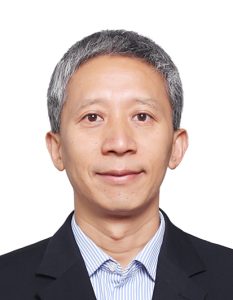Upcoming seminar
16 December 2025 (13:00-14:00 CET)
Speaker: Prof. Liu Xuejun, College of Resources and Environmental Sciences, China Agricultural University, China.
Title: The pathway to achieve green eco-environment: Taking PM2.5 air quality and atmospheric nitrogen deposition as examples.
Where: Zoom (ID: 691 6007 1095, code: 004296)
Past seminars
Nitrate in Groundwater – Insights from data driven modelling in Switzerland

Dr. Gustavo Covatti, Post-Doctoral Researcher at the Swiss Federal Institute of Aquatic Science and Technology (Eawag).
Abstract: Fertilizer application has quadrupled worldwide since the 1960s. This allowed for the significant increase in global food production, but also resulted in large-scale nitrogen leaching from soils and hence is the principal source of nitrate contamination in the world’s aquifers. High nitrate levels in groundwater have been a concern in European politics for decades. Yet, nitrate is still one of the substances that most often exceeds the guideline limits in European and Swiss aquifers. In this seminar, we will present a machine learning approach capable of modelling nitrate levels in Swiss groundwater through space and time. The data-driven spatial modelling allows us to identify what makes an area more vulnerable to nitrate contamination, including anthropogenic and environmental pressures such as land use, atmospheric nitrogen deposition, climate and soil characteristics. The temporal modelling helps us to understand the main drivers of change in nitrate concentrations in Switzerland over the last 20 years and what can be expected in the future.
Watch the recording here.
What controls nitrate aerosol formation and partitioning in the Netherlands?

Juliane L. Fry, Associate Professor of Air Quality and Atmospheric Chemistry at Wageningen University, Netherlands.
Abstract: This seminar will present an overview of the chemistry of nitrate secondary aerosol formation and its dependence on key variables such as VOC composition, NOx and NH3 levels, temperature, and aerosol water and acidity, with focus on the reactive nitrogen-rich chemical regime of the Netherlands. I will present observations from previous field and chamber studies that have helped elucidate chemical controls on aerosol production, and introduce our ongoing CAINA (Cloud-Aerosol Interactions in a Nitrogen-rich Atmosphere) project. https://sites.google.com/view/cainaproject/home.
Watch the recording here.
Clouds and climate transitioning to post-fossil aerosol regime – CleanCloud: Overview of field, chamber and modelling activities

Dr. Ulas Im, Aarhus University & Prof. Athanasios Nenes, EPFL and Foundation for Research and Technology-Hellas.
Abstract: Aerosol–cloud interactions (ACI) are the largest source of uncertainty in understanding anthropogenic impacts on present & future climate. Sharp reductions in pollution with the energy transition means natural aerosols will dominate ACI, but differently than in the pre-industrial era owing to climate shifts and evolving sources (e.g., wildfires, dust and bioaerosols). CleanCloud seeks to understand these changes and equip models to effectively address ACI in the current and post-fossil world.
For its objectives, CleanCloud conducted field campaigns in climate hotspots (Arctic, Mediterranean) to develop and improve remote sensing of clouds and aerosols, and contribute to the calibration and validation of satellite missions targeting ACI. Laboratory chamber experiments studying natural mineral dust and sea-salt aerosols constrain their cloud forming properties. CleanCloud improves kilometer- & large-scale climate models through advanced ML, data assimilation & model calibration. These models are used to study aerosol impacts on convective systems and contributes to the IPCC AR7.
We will give an overview of the ongoing CleanCloud measurement & modelling activities, results and highlights – and discuss possible ReCLEAN synergies.
Watch the recording here.
Effects of excess nitrogen deposition on Swiss forests.

Dr. Sabine Braun, Institute for Applied Plant Biology, Switzerland
Abstract: The negative effect of excess nitrogen on natural ecosystem has been acknowledged in UNECE working groups by setting critical loads. Results from the intercantonal forest monitoring programme with 21’715 trees in 247 plots made a significant contribution to this process for forest ecosystems. Excess nitrogen reduces the species diversity and the colonization success of ectomycorrhizal fungi and thus impairs the uptake of nutrient and water by the trees. An imbalanced nutrition results in lower growth, reduced drought resistance and increased sensitivity to pests and pathogens. Eutrophication of the forests enhances the growth of nitrophilic plants such as blackberries, stinging nettles and elderberries. Leaching of excess nitrogen as nitrate from the soil leads to loss of cations and thus to soil acidification.
Watch the recording here.
Monitoring network for atmospheric ammonia concentration and nitrogen deposition in Switzerland.

Mario Meier, FUB – Forschungsstelle für Umweltbeobachtung AG, Switzerland.
Abstract: High ammonia concentrations and nitrogen depositions have a negative impact on plants and sensitive ecosystems. For this reason, a continuous monitoring of these parameters was set up in Switzerland in 2000. In addition, extensive campaigns to quantify nitrogen depositions took place in 2000, 2014, 2019 and 2024. The results of these measurements show that atmospheric nitrogen depositions into sensitive ecosystems are largely too high and that the critical levels for ammonia are often exceeded. Further measures to reduce emissions of nitrogen compounds are therefore necessary. This seminar will not only cover the methods and results of these projects but also show how they are organized with numerous stakeholders and how the authorities and the scientific community benefit from them.
Watch the recording here.
Climate-Smart Agriculture in Southeastern US.

Prof. Eri Saikawa, Department of Environmental Sciences, Emory University, USA.
Abstract: In this talk, Prof. Eri Saikawa will present several climate-smart agriculture projects that her lab has worked on since 2016. Two of these projects were conducted at experimental farms in Georgia, and a new project is beginning at vegetable farms in the Southeastern Piedmont region. Saikawa’s lab focuses on exploring how and whether it is possible to mitigate the three major greenhouse gases (carbon dioxide, methane, and nitrous oxide) and ammonia. Prof. Saikawa will present results from various field campaigns that assess the impact of different agricultural practices.
Watch recording here.
Nitrogen deposition in northwestern Europe: Improving the model system using dynamic emissions and vegetation information.

Prof. Dr. Martijn Schaap, principal scientist at TNO and Extraordinary Professor at the Free University of Berlin.
Abstract: Atmospheric deposition of reactive nitrogen causes eutrophication in natural ecosystems, threatening biodiversity. The major uncertainties in the regional modelling of nitrogen deposition relate to the quality of the emissions, the initial dispersion and the deposition parametrizations. The main goal of this presentation is to provide an overview of recent developments on detailing the representation of the spatial and temporal emission variability and the dry deposition scheme and to quantify their impacts on (land use specific) nitrogen deposition distributions and the model performance of the LOTOS-EUROS model.
To improve the temporal representation of ammonia emissions an agricultural emission timer for housing emissions and manure application to croplands and pastures is under development. A new AI based scheme to forecast manure application removes biases of several weeks in the timing for several crops. Initial attempt to improve the timing of grass land applications show that these systematically affect the east-west gradient in ammonia across western Europe. Evaluation against ammonia observations show improvements in all seasons. The representation of dry deposition in LOTOS-EUROS is facilitated by a new tiered land use approach allowing to discriminate a much larger set of vegetation classes. Validation of the deposition routine with novel flux measurements is ongoing and showed that the parametrization for coniferous forest derived twenty years ago show a good comparison to the new observations.
To address the interaction between the emissions, mixing, chemistry and deposition processes at sub-grid scales a development was started to include the nitrogen fate modelling in the dutch LES model DALES. We will illustrate the current state for ammonia and nitrogen oxides with this system.
Watch recording here.
Modelling national and field-scale N2O emissions in Swiss croplands using DayCent: key challenges and potential ways forward.

Dr. Shauna-Kay Rainford and Dr. Sonja Keel, Swiss Federal Research Institute Agroscope, Switzerland.
Abstract: Nitrous oxide (N2O) is a very potent greenhouse gas and the dominant substance responsible for stratospheric ozone depletion. Agricultural soil management is the main driver of anthropogenic N2O emissions. In this seminar we discuss key challenges associated with modelling N2O emissions for the Swiss greenhouse gas inventory. We demonstrate how the ecosystem model DayCent was calibrated and highlight current issues with input data. Different approaches for validating N2O emissions are shown. Additionally, we present a site-scale study to demonstrate how stable isotope analysis can be applied to improve the attribution of processes leading to N2O production in DayCent. Process-based models are valuable tools for greenhouse gas reporting and for assessing greenhouse gas mitigation potentials.
Watch recording here.
The N cycle in Earth System Models, what we can learn and what we are still lacking.

Dr. Maureen Beaudor, High Meadows Environmental Institute at Princeton University, USA.
Abstract: The Nitrogen (N) cycle plays a critical role in climate processes, influencing carbon sequestration and the emissions of greenhouse gases (GHGs) and air pollutants. Accurately representing N processes and human-induced disturbances in Earth System Models (ESMs) is essential for understanding N-climate interactions and predicting climate change impacts on ecosystems.
This seminar focuses on global soil N gaseous losses, particularly ammonia (NH3) and nitrous oxide (N2O), using two land surface models integrated into ESMs. Historically, these emissions have received less attention than CO2, being the last piece of the reaction chain and with agricultural contributions often externalized as fixed inputs like fertilizers and manure. To address this, we developed CAMEO (Calculation of AMmonia Emissions in ORCHIDEE), enhancing the IPSL land-surface model with dynamic ammonia emission calculations based on meteorological, environmental conditions, and agricultural practices. Applied to IPCC future scenarios, CAMEO enabled projections of NH3 emissions up to 2100, revealing emissions ranging from 50 to 70 TgN/yr. These results, exploited in the IPSL atmospheric chemistry model (LMDz-INCA) under divergent SSPs, highlight the significant impact of NH3 emissions on atmospheric chemistry and N2O burdens. We also present advances in the NOAA-GFDL ESM, incorporating microbial processes into the N cycle through the NOGIMICS (NitrOgen-Global Integrated Microbial Interactions with Carbon in Soil) model. By explicitly modeling microbial activity, this approach links soil C dynamics and N availability with N2O emissions and NH3 volatilization, offering a mechanistic parameterization for natural ecosystems. These novelties underscore the need for refined representations of N gaseous losses and agricultural practices in ESMs. Key findings and implications for climate and atmospheric chemistry will be presented.
Watch recording here.
Ammonia emission from Swiss Agriculture and its fate.

Dr. Christof Ammann, from the Swiss Federal Research Institute Agroscope, and Dr. Alex Valach, from the Bern University of Applied Sciences, Switzerland.
Abstract: Ammonia (NH3) is an important atmospheric pollutant due to its contribution to secondary inorganic aerosol formation and its deposition and impacts on (semi-)natural ecosystems.
The predominant emission source in Switzerland is livestock agriculture, wherein NH3 is volatilized from ammonium contained in animal manure. Using suitable measurement methods, the NH3 emissions of various sources (animal housings, manure storage and field application, grazing) have been investigated. From available experimental studies in Switzerland and internationally, mean emission factors for the different stages of the manure cascade have been derived, as well as the effect of emission mitigation options. They are used in the Agrammon emission model to derive annual NH3 emissions from agriculture for the Swiss national emission inventory.
While modelled NH3 emissions indicate a minor decrease since the year 2000, concentration measurements do not reflect this trend. This can at least partly be attributed to a decline in the transformation of NH3 to particulate ammonium due to significantly decreased emission of oxidized nitrogen and sulfur compounds in the past decades. The partitioning between the gaseous and the particulate phase also determines the deposition pathway (dry or wet deposition) and thus the average lifetime and transport distance in the atmosphere. NH3 dry deposition has superseded wet deposition as the most important contributor between 2000 and 2010. The dry deposition process of NH3 is highly variable in space and time due to the dependence of the deposition velocity on various meteorological and vegetation parameters. It is therefore still subject to high uncertainties, especially within short distances from the source, where the majority of deposition takes place. Emissions, short-distance transport, and re-deposition of NH3 is presently investigated using micrometeorological measurement methods in combination with Lagrangian modelling of near-surface turbulent transport.
Watch recording here.
Atmospheric acidity, reactive nitrogen, dry deposition regimes and their link to plant growth: a case study for an agricultural and forested site in Switzerland.

Dr. Jun Zhang and Prof. Athanasios Nenes, Laboratory of Atmospheric Processes and their Impacts – LAPI at EPFL, Switzerland.
Abstract: Excessive nitrogen (N) deposition from anthropogenic activities poses significant challenges to ecosystems and air quality. This presentation examines N deposition across atmospheric and terrestrial compartments in Switzerland. At the agricultural site in Payerne Switzerland, high-resolution mass spectrometry measurements of nitric acid (HNO3), ammonia (NH3), and aerosols reveal the influence of aerosol liquid water content and aerosol acidity on N deposition patterns. These findings, contextualized with 15 years of long-term monitoring, provide valuable insights for designing pollutant mitigation strategies.
As atmospheric acidity modulates the deposition patterns of N, the impact of N deposition on plant growth is investigated. A microcosm experiment using oat (Avena sativa L.) simulates the impact of atmospheric N deposition on soil N cycling, plant productivity and stoichiometry of plant-soil interaction in the Leman region in Switzerland. We found that even moderate N deposition increases chlorophyll content and enhances the ability of plants to compete with soil microorganisms for nutrients. N deposition further increased nitrification rate and enzymatic activity, particularly towards lignin and chitin degradation. Altogether, atmospheric conditions and N deposition can be an important contributor to soil nutrient supply and also modulate soil-plant interactions. Earth system models should therefore consider such feedbacks to inform more sustainable crop production and enhance predictions of ecosystem responses to anthropogenic N inputs.
Watch recording here.
Surface exchange of reactive nitrogen gas between soil and atmosphere.

Prof. Dianming Wu, School of Geographic Sciences, East China Normal University, China
Abstract: Interactions between soil and the atmosphere significantly influence climate change and air pollution. Anthropogenic nitrogen input into soil has more than doubled since the last century, leading to the emission of substantial quantities of reactive nitrogen (Nr) gases, such as nitrous acid (HONO), nitrogen oxides (NOx), and ammonia (NH3), which subsequently enter the atmosphere. HONO, NOx, and NH3 are typical air pollutants that affect atmospheric oxidation capacity and air quality. However, many challenges and open questions remain in the research on soil Nr emissions. This presentation will introduce our group’s research on soil Nr emissions, particularly focusing on HONO. It will discuss the measurement methodologies, the dominant processes and environmental factors involved, and their impacts on the atmospheric environment. Understanding the interactions and feedback between soil microbes and atmospheric chemistry is crucial for comprehending our Earth’s atmosphere and global change.
Watch recording here.
Tight coupling of carbon and nitrogen biogeochemistry: Expected and unexpected results from forests and agroecosystems.

Prof. Nina Buchmann, Grassland Sciences Group at the Department of Environmental Systems Science, ETH Zurich, Switzerland
Abstract: Biogeochemical processes within and across ecosystems are core to understand the functioning of terrestrial ecosystems, i.e., forests and agroecosystems. In our group, research topics focus on biosphere-atmosphere greenhouse gas (GHG) exchange (CO2, H2O, CH4, N2O) and carbon sequestration, complemented by plant and ecosystem ecophysiology as well as functional plant diversity. Thus, the Swiss FluxNet, the Swiss network of six long-term sites with ecosystem-scale eddy-covariance flux measurements, all run by our group, is the backbones of our research. The Swiss FluxNet covers the major land-use types in Switzerland: forest (mixed deciduous: Lägeren; evergreen: Davos), grassland (Chamau, Früebüel, Alp Weissenstein), and cropland (Oensingen), and is regularly complmented by project-based flux stations which run for 2-4 years. Currently, we provide 123 site-years of continuous GHG flux measurements (19-27 years per site, and growing…) to the scientific community, since all our data are all open access and have been downloaded more than 26′ 800 times between Nov. 2016 and Dec. 2023. In the talk, selected highlights will be presented about the long-term carbon sink behaviour of forests and agroecosystems, about the role of N deposition for forest responses to climate change, about winners and losers when weather extremes hit, about using biodiversity principles to mitigate N2O emissions, about responses to management events and unexpected trade-offs, and what machine learning tells us about changing flux drivers.
Watch recording here.
HONO and NOx production from renoxification of nitrate-containing aerosols.

Dr. Fengxia Bao, Postdoctoral researcher, Paul Scherrer Institute – PSI, Switzerland
Abstract: Oxides of nitrogen (NOx = NO + NO2) and nitrous acid (HONO) play crucial roles in forming tropospheric ozone (O3), hydroxyl radicals (·OH), and secondary aerosols. The photochemical reduction of nitrate aerosol is of significant atmospheric interest as it produces HONO and NOx, a process termed renoxification. Organic species, especially light-absorbing brown carbon (BrC), predominantly derived from biomass burning, are suggested to be key players in renoxification. However, evidence of BrC from authentic ambient aerosols is lacking and the mechanism remains unclear. Here, we investigate BrC-associated renoxification upon irradiation of films containing BrC extracts from authentic biomass-burning aerosols and BrC model compounds using the coated wall flow tube (CWFT) technique. We mimic real-world aerosol conditions by adjusting pH, the concentration of nitrate and BrC, and the relative humidity of the CWFT films, ensuring atmospheric relevance. We find that the renoxification rate is enhanced in the presence of BrC and elucidate the role of BrC as a photosensitizer that promotes the reduction of nitrate, challenging the previously proposed mechanism of surface-enhanced photolysis of nitrate. Given the prevalence of the coexistence of nitrates and BrC in ambient aerosols, the BrC-photosensitized renoxification could be a substantial source of HONO and NOx, which should be considered by atmospheric models for atmospheric nitrogen chemistry and air quality.
Watch recording here.
Governing Nutrient Pollution Beyond Farmers.

Dr. David R. Kanter, Associate Professor of Environmental Studies, New York University, USA
Abstract: Nutrient pollution is one of the most significant environmental issues of our time, driven by the oversupply of fertilizer and manure to agricultural land. Most policies focus on changing farmer behavior, which is extremely difficult, largely ineffective and a major reason why pollution levels continue to rise. A more creative governance framework that can avoid the pitfalls of farmer-focused policies while spurring reductions in agricultural nutrient pollution is critical. Consequently, the core objective of the Governing Nutrient Pollution Beyond Farmers project is to design a new governance framework to address agricultural nutrient pollution in the US and the EU aimed at agri-food system actors beyond the farm capable of influencing farm-level nutrient management – from fertilizer companies to multinational retailers. Doing so would shift the regulatory burden away from the farmer and transform an intractable non-point source problem into a series of more manageable point source approaches.
Watch recording here.
Aspects of measuring atmospheric deposition of nitrogen to forest ecosystems

Dr. Peter Waldner, Forest Soils and Biogeochemistry Research Unit at the Swiss Federal Institute for Forest, Snow and Landscape Research WSL, Switzerland
Abstract: Rising concerns of air pollution effects on forests, potentially accelerated soil acidification or eutrophication triggered a now 40 years joint forest ecosystem monitoring effort covering Europe. Emissions, transmission and deposition are monitored under the UNECE Air convention. In forests, leaves and needles of trees may filter particles, aspire gaseous compounds and exchange solutes over tissues. A feasible approach to continuously sample nitrogen deposition at several hundred sites has been developed. The presentation will mention some challenges and quality assurances measures taken, as well as potential the comparability to other approaches and present spatial and temporal trends as determined in the ICP Forests network across Europe. Further, ways to assess nitrogen deposition to forests, such as the concept of critical loads, as well as some recent findings on the effects of nitrogen deposition to forests will be discussed.
Watch recording here.
How does low NO concentration modify secondary particle formation

Prof. Chao Yan, Associate Professor at Nanjing University, China
Abstract: Low atmospheric concentration of nitrogen monoxide (NO) represents common conditions in pristine environments and becomes progressively more frequent in urban settings due to the implementation of strict emission controls. Given the highly nonlinear nature of atmospheric chemical processes, the effects of high NO concentration on secondary particle formation may not apply to low-NO conditions. In this presentation, we will introduce our recent findings regarding the influences of NO at low concentrations on atmospheric chemistry and secondary particle formation in two aspects. Firstly, we will show the pivotal role of NO in the production of highly oxygenated organic molecules (HOM) and subsequently, the new particle formation; Secondly, we will present evidence that low-NO conditions can activate nocturnal nitrogen chemistry, which is responsible for the persistently high particulate nitrate concentration in urban environments.
Watch recording here.
Plant elemental ecology: understanding plant nutrient flows in a global change context

Dr. Helena Vallicrosa, Postdoctoral researcher at EPFL and WSL, Switzerland
Abstract:
This seminar tackles three main points:
- Introduction to the concept of elemental ecology, which studies the interactions between organisms (plant-soil-ecosystem) through elemental composition and elements flow. Elemental ecology is a relevant tool to study the impact of changes in chemical cycles (Carbon, Nitrogen, Phosphorus…) associated to global change on ecosystems.
- Presentation of the results of a study in preparation: leaf habits and climate drives tree growth sensitivity to N deposition. This study addresses the ReClean goal about better understanding the impacts of N deposition on vegetation at continental scale.
- An experiment set up to better understand the N flow in grasslands, accounting for soil N, the microbial community, belowground biomass, aboveground biomass, and reproductive tissues.
Watch recording here.
Quantifying climate-dependent ammonia emissions – a starting point for understanding N in the environment.

Dr Jize Jiang, ETH Zurich, Switzerland
Abstract:
Ammonia (NH3) is one of the primary forms of reactive nitrogen and can negatively affect the environment and human health. It has adverse impacts on air, water, soil quality and ecosystems. Emissions of NH3 mainly originate from agricultural activities and are found to be strongly dependent on environmental conditions. A dynamic, process-based emission model, AMmonia–CLIMate (AMCLIM) has been developed to quantify agricultural NH3 emissions. AMCLIM simulates important physical, chemical and biological processes that are sensitive to climatic conditions in agricultural systems, focusing on major livestock farming and synthetic fertilizer use.
Global agricultural NH3 emissions estimated by AMCLIM accounted for 22±2 % of agricultural nitrogen input (synthetic fertilizer and livestock excreta). The volatilization of NH3 shows strong spatial and temporal variations. High volatilization tends to occur in hot regions and hot seasons. Water availability is also a critical environmental factor influencing NH3 volatilization, with larger emissions found under dry conditions. Meanwhile, local management practices have significant impacts. Combining a suite of tested improved management can result in NH3 reduction by 40 % globally.
Watch recording here.
Past and future changes in atmospheric deposition of nitrogen and its consequences.

Prof. Maria Kanakidou, Department of Chemistry of the University of Crete, Heraklion, Greece and University of Bremen, Germany
Abstract:
Nitrogen is an essential nutrient for the functioning of ecosystems, which are a major source of food for humanity and responsible for the atmospheric oxygen we breathe. Nitrogen inputs to both terrestrial and marine ecosystems have been modified during the Anthropocene period with consequences such as eutrophication and acidification. Atmospheric deposition is one of the pathways through which reactive nitrogen is reaching the ecosystems. Atmospheric acidity is a key factor in the partitioning of reactive nitrogen species between the gaseous and the particulate phases of the atmosphere, which affects the lifetime of reactive nitrogen in the atmosphere and thus the pattern of its global deposition. Satellites allow the observation of atmospheric columns of ammonia and nitrogen dioxide, resulting from nitrogen emissions, transformations and transport in the global atmosphere. We will discuss recent global chemistry-transport modeling studies focusing on the biogeochemical cycle of nitrogen, the role of atmospheric acidity and organic matter, how this cycle has been affected by human activities and the potential consequences for the ecosystems. We will also discuss recent efforts in improving the total global atmospheric deposition data by measurement-model fusion activities.
Watch recording here.
Grasping Nitrogen! What science do we need to mobilize a halving of nitrogen waste by 2030?

Prof. Mark A. Sutton, UK Centre for Ecology and Hydrology, UK
Abstract:
Everyone has heard of nitrogen, so why have so few people heard about nitrogen as a global environmental challenge? This presentation will reflect on the way humans have altered the global nitrogen cycle, leading to multiple environmental impacts, from polluted skies to poison lakes. It will explore how the complexity and diversity of nitrogen impacts has fragmented scientific research and the policy responses, and argue that this fragmentation is at least one of the reasons for insufficient awareness and action to date. The presentation will recount progress through the European Nitrogen Assessment and the UNECE Air Convention leading to engagement with the United Nations Environment Programme, coupling science synthesis, preparation of international guidance and awareness raising that can mobilize change. Key outcomes include the Colombo Declaration and the first ever resolutions on Sustainable Nitrogen Management adopted by the UN Environment Assembly (4/14 and 5/2), which provide an opportunity to distil key scientific conclusions and to mobilize countries to start embracing nitrogen as a new intergovernmental challenge. The presentation will complete with an update on current progress in developing the first ever International Nitrogen Assessment, the Kunming Montreal Global Biodiversity Framework and the emerging challenges which could see nitrogen pollution get worse or better in the years ahead.
Watch recording here.
Looking Back and Forward: Advanced Air Quality Modeling Techniques to Address Health and Climate.

Prof. Armistead (Ted) Russell, Georgia Institute of Technology, US
Abstract:
Despite the great strides made over the last 50 years, air pollution still causes more premature deaths than any other environmental exposure globally and in most countries. Climate will exacerbate air pollution, and increasing tropospheric ozone will exacerbate climate. Policies can be designed to address both, simultaneously, providing co-benefits. Here, advanced air quality modeling techniques, including using both emissions-focused (i.e., forward) and receptor-oriented (the adjoint method) are used to assess how emissions impact air quality and health, and to examine the spatial variation in the health benefits and value of reducing emissions. The potential air quality benefits are linked to CO2 reductions to also show the added value in terms of reducing CO2 emissions. Air pollution benefits can be on the same order as the climate benefits of climate strategies. The development of forward (the decoupled direct method) and adjoint sensitivity approaches in three dimensional air quality models are presented along with their application to air quality, health and climate applications are discussed.
Watch recording here.
Mitigating reactive nitrogen and associated environmental challenges: technological and policy opportunities.

Dr Yixin Guo, Postdoctoral Scholar, Peking University, ChinaProf. Mark A. Sutton, UK Centre for Ecology and Hydrology, UK
Abstract:
Accelerated global food and energy production has led to reactive nitrogen (Nr; ammonia (NH3) and nitrogen oxides (NOx)) emissions, which contribute considerably to severe health-damaging PM2.5 and ozone (O3) air pollution, and excess N deposition harmful for terrestrial ecosystem biodiversity. However, Nr abatement still lacks broad policy attention and its potentials for future coordinated environmental governance remain unclear. In this talk, Yixin will present research that examined, for China, potentials of improving agricultural N management practices and changing diets for improving air quality while reducing climate and water impacts, and, for the globe, potentials of addressing food loss and waste along supply chains for improving air quality and ecosystem health. Yixin will also talk about more recent work that examined the evolving role of reactive nitrogen emissions in future air quality.
Watch recording here.
ReCLEAN monthly seminars recording
Missed one of our ReCLEAN monthly seminars?
Check out all past recordings in our MediaSpace Channel.
